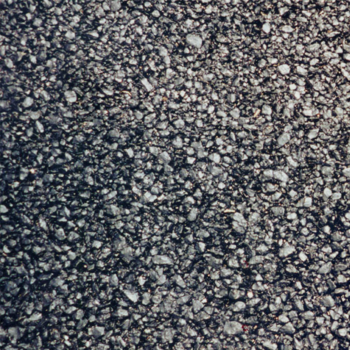Asphalt (paving): Difference between revisions
imported>Milton Beychok (Some minor rewording to be consistent with the Asphalt (petroleum) article.) |
imported>Milton Beychok m (→Use: Renamed the "Use" section as "Use in road construction" and expanded it quite a bit.) |
||
| Line 19: | Line 19: | ||
* [[specific heat capacity]]: 850 - 1050 [[SI#Other derived units||J/kg•K]] | * [[specific heat capacity]]: 850 - 1050 [[SI#Other derived units||J/kg•K]] | ||
== Use == | == Use in road construction == | ||
There are various mixtures of asphalt with other materials that are used in road construction and other paving applications: | |||
*''Rolled asphaltic concrete'' that contains about 95% aggregate and 5% petroleum asphalt binder. | |||
*''Mastic asphalt'' that contains about 90–93% aggregate and 7–10% petroleum asphalt binder. | |||
*''Asphalt emulsions'' that contain about 70% petroleum asphalt and 30% water plus a small amount of chemical additives. | |||
*''Cutback asphalt'' that contains petroleum solvents (referred to as ''cutbacks''). | |||
By the early 1990s, asphalt paving mixture producers in the United States used more than 50 × 10<sup>6</sup> [[U.S. customary units|barrels]] (7.95 × 10<sup>6</sup> cubic metres) of petroleum asphalt per year. Of the 2.27 × 10<sup>6</sup> [[U.S. customary units|miles]] (3.65 × 10<sup>6</sup> kilometers) of paved road in the United States, 94 percent of them are surfaced with asphalt paving.<ref>[http://www.referenceforbusiness.com/industries/Petroleum-Refining-Related/Asphalt-Paving-Mixtures-Blocks.html SIC 2951, Asphalt Paving Mixtures and Blocks]</ref> | |||
== Manufacturing == | == Manufacturing == | ||
Revision as of 03:03, 18 February 2009
- For other articles with this same name or an associated name, please see Asphalt (disambiguation)
Paving asphalt is a mix of petroleum asphalt (commonly referred to as bitumen), aggregate and additives that is very commonly used as a top layer of pavement for roads. A typical paving asphalt consists to 90 to 95 percent by weight of aggregate and 5 to 10 % of bitumen.
Paving asphalt is sometimes referred to as asphaltic concrete and, when used to pave airports, may be referred to as tarmac.
Properties
Paving asphalt is water repellant due to the bitumen which is part of the asphalt mix.
The physical properties are dependent on the temperature of the material. At high temperatures, paving asphalt has a very distinctive viscous behaviour. As the paving asphalt cools, it will solidify into a nearly-rigid solid, though some flexibility is retained at ordinary outdoor temperatures.
As the physical properties are mainly dependent on the aggregates used, they can vary over a large range. Typical values are:
- thermal conductivity: 0.8 - 1.2 W/m•K
- specific heat capacity: 850 - 1050 |J/kg•K
Use in road construction
There are various mixtures of asphalt with other materials that are used in road construction and other paving applications:
- Rolled asphaltic concrete that contains about 95% aggregate and 5% petroleum asphalt binder.
- Mastic asphalt that contains about 90–93% aggregate and 7–10% petroleum asphalt binder.
- Asphalt emulsions that contain about 70% petroleum asphalt and 30% water plus a small amount of chemical additives.
- Cutback asphalt that contains petroleum solvents (referred to as cutbacks).
By the early 1990s, asphalt paving mixture producers in the United States used more than 50 × 106 barrels (7.95 × 106 cubic metres) of petroleum asphalt per year. Of the 2.27 × 106 miles (3.65 × 106 kilometers) of paved road in the United States, 94 percent of them are surfaced with asphalt paving.[1]
Manufacturing
The manufacturing of asphalt is done in several steps:
- Predose: Depending on the asphalt recipe, the individual components of the aggregate are weighed. Usually this is done using a belt weigher, as the material has to reach the next step in a continuous flow.
- Drying: In a rotary drying drum, the components of the aggregate are dried at a temperature between 140 and 190 °C. After the drying, the components are sifted and separately stored in several silos.
- Weighing: As the drying can change the previous grain-size distribution curve, a final weighing has to take place before adding the individual aggregate components to the mixer. This also allows for quick changing of the recipe. The binder (asphalt) is kept in heated tanks and added to mixer according to a measured rate of flow.
- Mixing: The mixer can be working either continuously or at intervals. An interval mixer is fed with the aggregates using a charging screw and the binder is synchronously injected into the mixing chamber. For very high volumes, a continuously working mixer is used and it can not be adapted quickly to changing volume and recipe needs.
- Dispatching: The mixed material is stored in a heated silo which usually has several chambers to store different recipes.
Transport
Asphalt has to reach the construction site with a reasonably high temperature as it can not be properly placed if it cools to the point where it can no longer be compacted. The transportation has to be set up in a way to ensure the correct temperatures can be maintained until the construction site is reached. For short distances between the asphalt plant and the construction site, ordinary trucks can be used and covered with tarpaulins to maintain the temperatures. If the ambient temperature is too low or the construction site is too far away to use ordinary trucks and maintain the correct temperatures, then special trucks have to be used.

